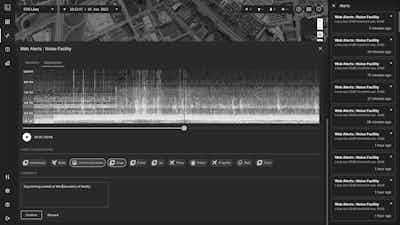Blanket approaches for mitigating industrial noise pollution often end in one outcome.
Bigger, more expensive blankets.
Today’s industrial facilities have an increasing responsibility to the environment and surrounding communities. Communities experiencing loud noises from nearby industrial operations can lead to a host of problems, from lost sleep to decreased property values.
By precisely targeting noise management strategies, industrial operations can significantly reduce the impact of their noise output on local communities.
However, it can be difficult to know where to start when deploying noise management strategies.
Where do you start when implementing noise management strategies at industrial operations?
Engineering noise controls, sound barriers, and limiting operational hours are just a few examples of effective noise management practices that can help industrial operations operate in harmony with nearby neighbourhoods.
These methods typically require hefty investments but precise deployment can reduce excess costs while ensuring more effective noise mitigation in the future.
The use of real-time noise monitoring software, coupled with deployed monitoring networks, has become an effective approach to identify noise exceedance events in these facilities. By continuously monitoring noise levels, the software can quickly identify what areas of their facilities exceed permissible limits, reducing the risk of potential harm.

Real-time monitoring software displaying secondly noise levels near Newmont's Hollinger mine in Ontario, Canada
The answer to deploying effective noise management strategies at industrial operations isn’t collecting and visualising the data. It’s what you do with it that matters the most.
How can real-time data be used effectively to support targeted noise management strategies?
The advent of environmental intelligence in the past decade has helped industrial facilities better understand and classify their noise events so they can put precise noise management strategies in place to avoid impact on communities.
Environmental intelligence (EI) is the use of data-driven technologies to help organisations make decisions about how to best protect the environment. EI can be used in a variety of ways, including predicting potential environmental problems, tracking changes in air or water quality over time, and analysing environmental impact assessments.
Industrial facilities benefit from using EI by having access to more accurate information on noise levels within the facility itself as well as nearby areas. This allows them to make informed decisions based on real-time data instead of relying on guesswork or outdated methods of estimating noise levels.
EI can also be used to play back noise events that caused exceedance and classify them based on what caused them. By doing this, they can better understand what is happening around them and adjust accordingly to stay within local regulations. This helps them avoid fines or other penalties while simultaneously reducing their overall environmental impact.
Additionally, this kind of data can provide insights into why certain areas may be noisier than others, which gives managers valuable insights into how they can reduce noise pollution at their site or even prevent it from occurring in the first place.
Saving time and resources by deploying industrial noise management strategies in the right place
Companies can use EI to accurately classify noise events and take action to limit their impact on nearby neighbourhoods. Not only does this help to improve the quality of life for community members, but it also ensures that operations are being conducted in a socially responsible manner.
Of course, not all noise events are caused by the operation itself. By ignoring those that aren't, companies can save both time and resources while still maintaining a strong commitment to noise management. With the right systems in place, industrial operations can operate in harmony with the environment and the community.
In addition to groundbreaking real-time insights across multiple environmental parameters, Envirsouite’s Omnis software now provides Noise Event Playback and Classification capabilities.
Keeping track of non-compliance events with Noise Event Playback
Noise Event Playback provides the ability for audio playback of a noise threshold alert for instant investigation. This helps operators at industrial facilities understand if their facility is compliant with noise regulations.

Noise Event Playback can be used to:
Investigate noise events at industrial facilities by playing the recording back and listening to the event that caused a breach (on Spectrogram or Wavform format)
Understand the event was caused by their facility or from something else (outside of facilities boundaries etc).
Provide a traceable record of regulatory compliance that can be provided to stakeholders at any time.
Deploying effective mitigation strategies with Noise Classification
Noise Classification helps industrial operators understand exactly what noise events are making their facility non-compliant.

Noise Classification provides operators with the ability to:
Classify noise events to help understand what noise sources lead to non-compliance
Retrospectively view performance to assess future plans
Make adjustments and investments to improve noise compliance (e.g. Noise proofing walls, moving loud equipment to another location or schedule vehicle leaving times during low-risk periods).
Talk to us today about your noise management requirements
Through harnessing the power of modern noise management software, site operators can make faster, more confident decisions that protect their social license to operate.
Envirosuite’s Omnis noise management software is built on over 30 years of applied noise management experience. With one of the best Noise Office teams in the world, the platform is trusted by those operating across industries like construction and aviation.
The easy-to-use software provides unrivalled scientific and technological excellence. Our software solutions help a variety of industries to:
Investigate noise disturbances in the community to quickly and effectively determine the likely source of noise complaints, enabling businesses to resolve issues faster.
Arm site operations with defensible noise management data to accept or refute responsibility for noise complaints.
Support growth and expansion plans with rich scientific data to build trust, tolerance and credibility with regulators, government and the community.
Contact us today to talk about your noise management software requirements.
